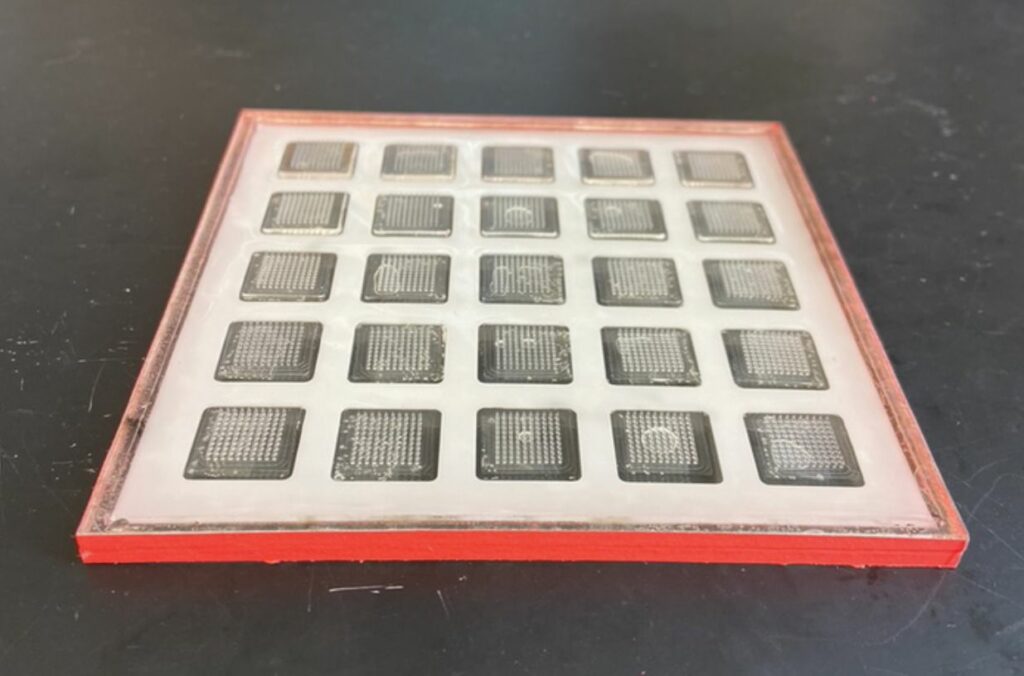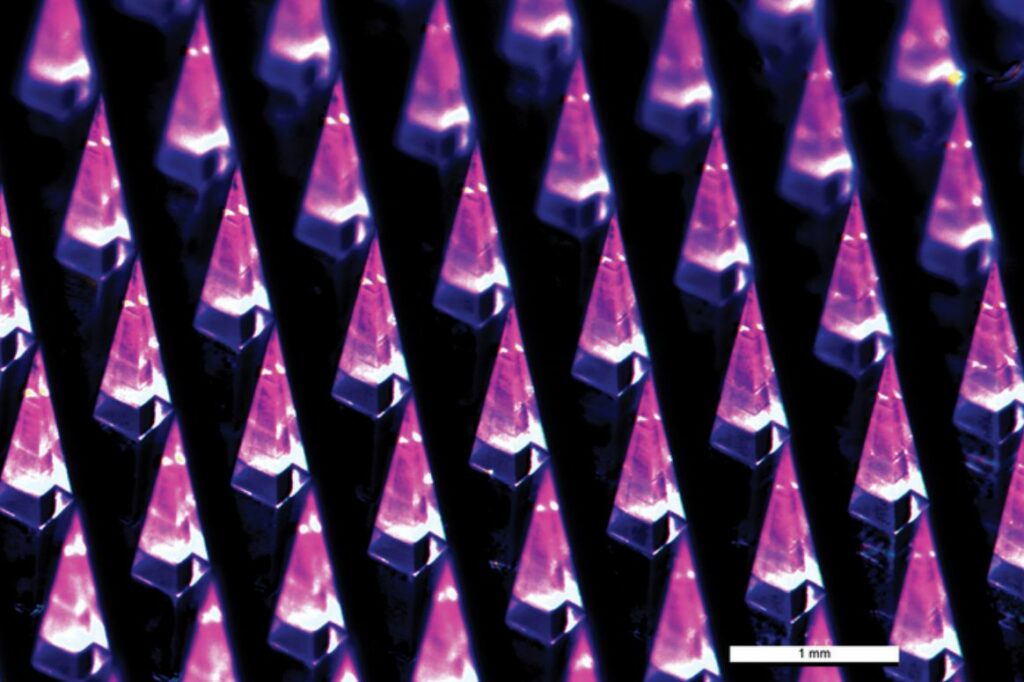Vaccine Printer: MIT Scientists Develop On-Demand Solution for Global Health
MIT’s mobile vaccine printer offers a promising solution to vaccine distribution challenges, with the ability to rapidly produce vaccines and reach more people in need, including those in remote areas without the necessary infrastructure.
MIT researchers have developed a mobile vaccine printer that has the potential to solve the challenge of delivering vaccines to remote areas that lack proper infrastructure. The printer creates vaccine-filled microneedle patches that can be stored for long periods at room temperature and applied directly to the skin. The printer, which is compact enough to fit on a tabletop, could potentially produce hundreds of vaccine doses per day, offering a practical solution for the on-demand production of vaccines in areas of need.
“We could someday have on-demand vaccine production,” remarks Ana Jaklenec, a research scientist from MIT’s Koch Institute for Integrative Cancer Research. “If, for example, there was an Ebola outbreak in a particular region, one could ship a few of these printers there and vaccinate the people in that location.”
The printer creates microneedle patches filled with vaccine that can be affixed to the skin, dissolving and delivering the vaccine without the need for a traditional injection. These vaccine patches remain stable for months at room temperature after being printed.
Researchers from MIT have published a study in Nature Biotechnology demonstrating that their printer can produce Covid-19 RNA vaccines in patch form that are thermostable and induce an immune response comparable to that of injected RNA vaccines in mice.
The study’s senior authors are Ana Jaklenec, a research scientist at MIT’s Koch Institute for Integrative Cancer Research, and Robert Langer, the David H. Koch Institute Professor at MIT and a member of the Koch Institute. The paper’s lead authors are former MIT postdoc Aurelien vander Straeten, former MIT graduate student Morteza Sarmadi ’21, and postdoc John Daristotle.

A New Era of Vaccination
Producing vaccines can be a challenge as they require refrigeration and trained healthcare professionals to administer them. The MIT team sought to overcome this by developing a way to produce vaccines on demand. Their initial motivation was to create a device capable of rapidly producing and deploying vaccines during outbreaks such as Ebola. This device could be transported to remote areas, refugee camps, or military bases to vaccinate large populations. Instead of traditional injectable vaccines, the researchers opted to work with microneedle-based vaccine delivery. These thumbnail-sized patches contain hundreds of microneedles and can be used for various diseases such as polio, measles, rubella, and COVID-19. Once applied to the skin, the microneedle tips dissolve under the skin, releasing the vaccine, eliminating the need for refrigeration or healthcare professionals to administer them.
“When Covid-19 started, concerns about vaccine stability and vaccine access motivated us to try to incorporate RNA vaccines into microneedle patches,” Daristotle adds.
The researchers utilize a specialized “ink” to print the vaccine-filled microneedles, which includes RNA vaccine molecules that are enclosed within lipid nanoparticles. This innovative approach enables the vaccine to remain stable for extended periods of time, even when stored at room temperature or higher. Additionally, the ink is composed of polymers that can be effortlessly shaped into the desired configuration and maintain stability for weeks or months.
A robotic arm within the printer delivers the ink into the microneedle molds, while a vacuum chamber below the mold ensures that the ink penetrates to the tips of the needles. After the molds are filled, the vaccine patches require a day or two to dry. The current prototype can produce up to 100 patches in 48 hours, but the researchers anticipate that future versions will have the capability of producing even more.

Testing the Long-Term Stability and Efficacy of Vaccines with Microneedle Patches
In order to evaluate the long-term stability of the vaccines produced through the printer, the researchers developed an ink that contained RNA encoding a fluorescent protein called luciferase. The microneedle patches were applied to mice after being stored for up to six months at either 4 degrees Celsius or 25 degrees Celsius (room temperature), with one batch stored at 37 degrees Celsius for one month.
Regardless of the storage temperature, the microneedle patches elicited a strong fluorescent response when applied to the mice. In comparison, the fluorescent response of a traditional intramuscular injection of the fluorescent-protein-encoding RNA decreased with longer storage times at room temperature.
The researchers then conducted a trial of their Covid-19 microneedle vaccine. They administered two doses of the vaccine, four weeks apart, to mice and measured their antibody response to the virus. The mice that received the microneedle patch had a similar response to those that were vaccinated with a traditional, injected RNA vaccine.
Additionally, the researchers observed the same strong antibody response when they vaccinated mice with microneedle patches that had been stored at room temperature for up to three months. This demonstrates the effectiveness and stability of the microneedle patches, and their potential for use in vaccine distribution and delivery.
“This work is particularly exciting as it realizes the ability to produce vaccines on demand,” comments Joseph DeSimone, a professor of translational medicine and chemical engineering at Stanford University, who was not involved in the research. “With the possibility of scaling up vaccine manufacturing and improved stability at higher temperatures, mobile vaccine printers can facilitate widespread access to RNA vaccines.”
Although the primary focus of this study was on Covid-19 RNA vaccines, the researchers have future plans to modify the process to create other types of vaccines, such as those made from proteins or inactivated viruses.
“The ink composition was key in stabilizing mRNA vaccines, but the ink can contain various types of vaccines or even drugs, allowing for flexibility and modularity in what can be delivered using this microneedle platform,” Jaklenec adds.
Source: 10.1038/s41587-023-01774-z
Image Credit: Getty & MIT
